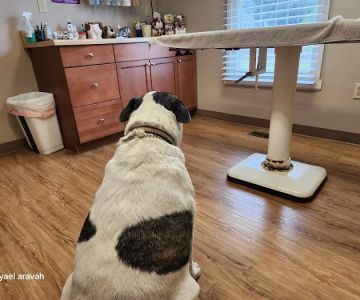Low-Fat Cat Food for Weight Management: The Right Choice for Your Cat
As a pet owner, one of the most important responsibilities is to ensure the health and well-being of your cat. Overweight cats can suffer from a variety of health issues, including diabetes, joint problems, and heart disease. One way to help manage your cat’s weight is by providing the right food. Low-fat cat food can be an excellent choice for weight management, and I’ve personally seen the benefits in my own cats. Let’s dive into the importance of low-fat cat food, how it works for weight management, and how you can choose the best food for your feline friend.
1. Understanding the Need for Weight Management in Cats
Just like humans, cats can struggle with obesity. In fact, according to a study by the Association for Pet Obesity Prevention, an estimated 60% of cats in the United States are classified as overweight or obese. This can lead to serious health complications such as diabetes, arthritis, and even a decreased lifespan. Managing your cat’s weight is crucial for their overall health and quality of life.
As a cat parent, I noticed my cat, Whiskers, had gained weight over the past year. She became less active, and I started noticing her struggling to jump onto her favorite perch. After consulting with my veterinarian, we decided to try a low-fat diet specifically formulated for weight management. The results were impressive – she became more energetic, and the excess weight started to come off steadily. If you are in a similar situation, low-fat cat food may be a helpful solution for your cat’s weight management.
2. The Role of Low-Fat Cat Food in Weight Management
Low-fat cat food plays a key role in managing your cat's weight by reducing the calorie intake, which is essential for weight loss. Cats are obligate carnivores, meaning they need animal-based protein to thrive. However, many commercial cat foods contain high amounts of fat, which can contribute to excess weight gain. By choosing low-fat options, you help ensure your cat gets the necessary nutrition without the added fat that leads to weight gain.
2.1 How Does Low-Fat Food Help with Weight Loss?
Low-fat foods are often lower in calories while still providing sufficient protein and essential nutrients for your cat. The reduced fat content helps prevent excess weight gain by limiting the number of calories your cat consumes. In combination with portion control and regular playtime, a low-fat diet can help your cat reach and maintain a healthy weight.
2.2 High-Quality Protein
One of the most important aspects of low-fat cat food is the presence of high-quality protein. Protein is essential for building and maintaining muscle, especially during weight loss. Look for foods that use named animal protein sources like chicken, turkey, or fish as the primary ingredient. In my experience, I’ve found that my cat responded well to foods that prioritize protein from animal sources rather than plant-based proteins, which might not offer the same nutritional benefits.
3. Choosing the Right Low-Fat Cat Food
When choosing a low-fat food for weight management, there are several factors to consider. It’s important to select a food that provides the right balance of protein, fat, fiber, and other nutrients to support your cat’s overall health. Below are some key aspects to look out for when selecting the right low-fat cat food for your pet:
3.1 Check the Caloric Content
One of the first things I check when selecting low-fat cat food is the caloric content per serving. Since weight management relies heavily on reducing calorie intake, it’s important to find food that is low in calories but still offers enough nutrients to keep your cat healthy. Many high-quality brands will list the calories per serving on the packaging, making it easy to compare options.
3.2 Opt for a Balanced Diet
Low-fat food doesn’t mean sacrificing nutrients. A balanced diet for weight management includes sufficient protein, fiber, vitamins, and minerals. Look for food with fiber, as it helps your cat feel fuller for longer and supports healthy digestion. After switching to a low-fat diet, my cat became more satisfied with her meals, as the food helped control her hunger and prevented overeating.
3.3 Consider Special Formulations
Some brands offer formulas specifically designed for weight management, such as foods that are high in protein but lower in fat, with added nutrients like L-carnitine that can help with fat metabolism. I’ve used these types of formulations for my cats, and they’ve worked wonders in supporting their weight loss goals.
4. Transitioning to a Low-Fat Diet
Switching your cat to a low-fat diet requires a gradual transition to avoid digestive upset. When I transitioned my cat, Whiskers, from her old food to the new low-fat formula, I did it over the course of about a week. I started by mixing a small amount of the new food with her old food and gradually increased the proportion of the new food while decreasing the old food. This helped prevent gastrointestinal issues and allowed her to adjust smoothly to the new diet.
5. Monitoring Progress and Adjusting Diet
Once your cat is on a low-fat diet, it’s important to monitor their progress. Regular checkups with your veterinarian are crucial, as they can help track your cat’s weight loss and overall health. In my case, I made sure to weigh Whiskers regularly and observed her behavior to ensure she was feeling well on the new diet. If you notice any signs of discomfort, like vomiting or diarrhea, consult with your vet right away.
Along with the diet, it’s important to keep your cat active. Playtime, interactive toys, and regular exercise can all contribute to healthy weight management. After a few months, I saw a noticeable difference in Whiskers – she had more energy, her coat became shinier, and she was more active. Most importantly, she felt better and seemed more comfortable in her own skin.
6. Pros and Cons of Low-Fat Cat Food
While low-fat cat food is generally beneficial for weight management, it’s not without its challenges. Here are some of the pros and cons based on my personal experience:
6.1 Pros
- Helps manage and reduce weight in overweight cats
- Promotes healthier skin and coat
- Can improve energy levels and overall activity
- Helps prevent obesity-related health problems such as diabetes
6.2 Cons
- Can be more expensive than regular cat food
- May not be suitable for cats with specific health conditions that require a higher fat intake
- Some cats may not enjoy the taste or texture of low-fat foods
In conclusion, a low-fat diet can be an excellent choice for cats that need to lose weight or maintain a healthy weight. However, it’s important to choose the right formula and transition carefully to avoid digestive issues. By choosing a high-quality low-fat food, monitoring your cat’s progress, and keeping them active, you can support their weight management and overall health.
If you're considering a low-fat diet for your cat, visit Hidden Brook Veterinary for personalized advice and recommendations.











